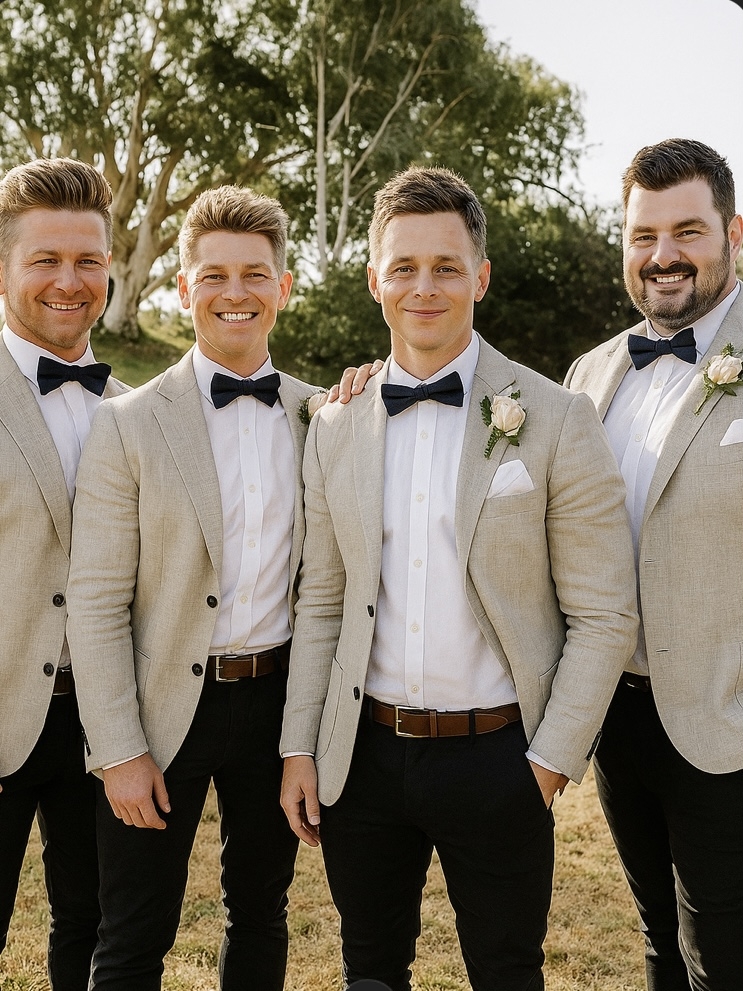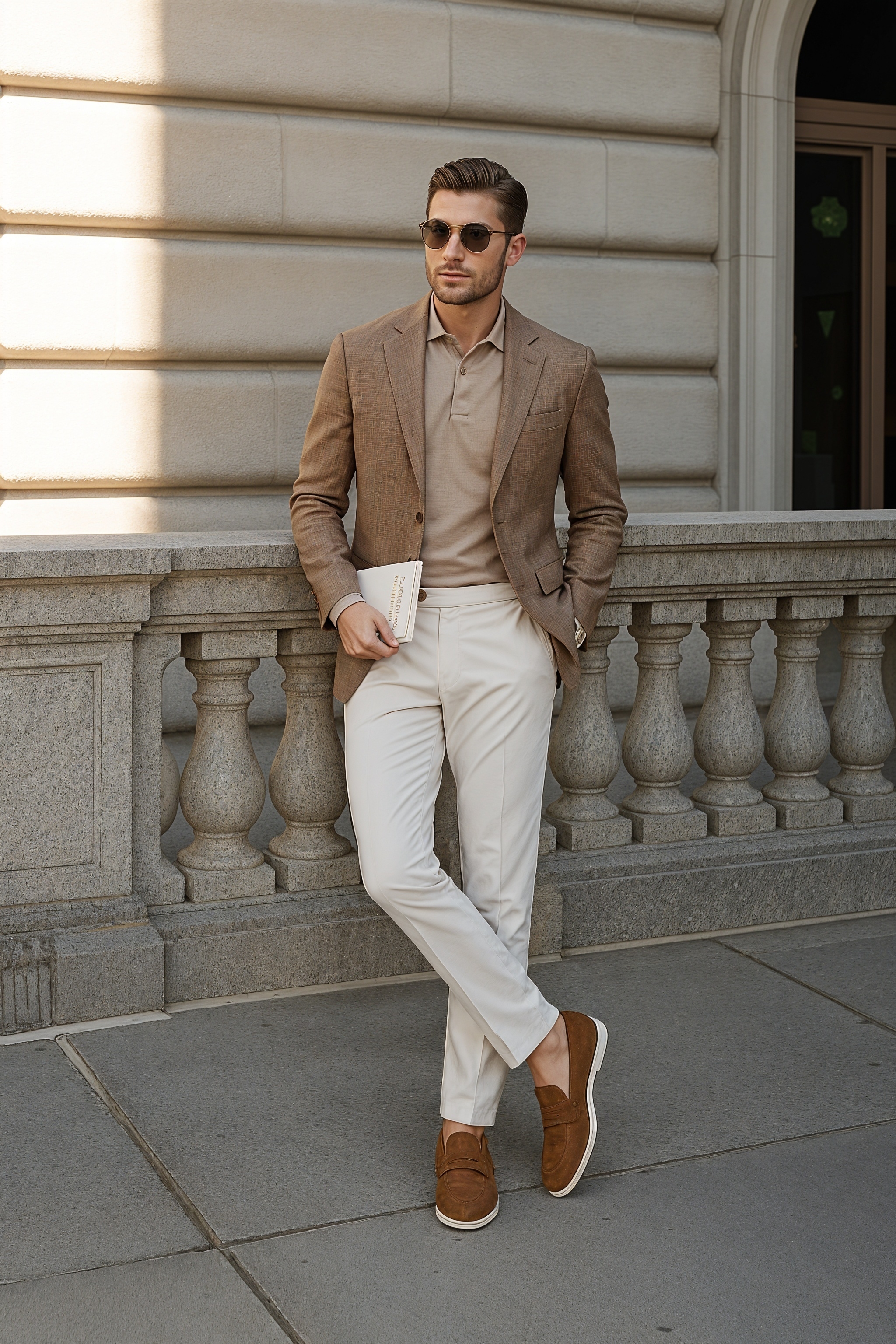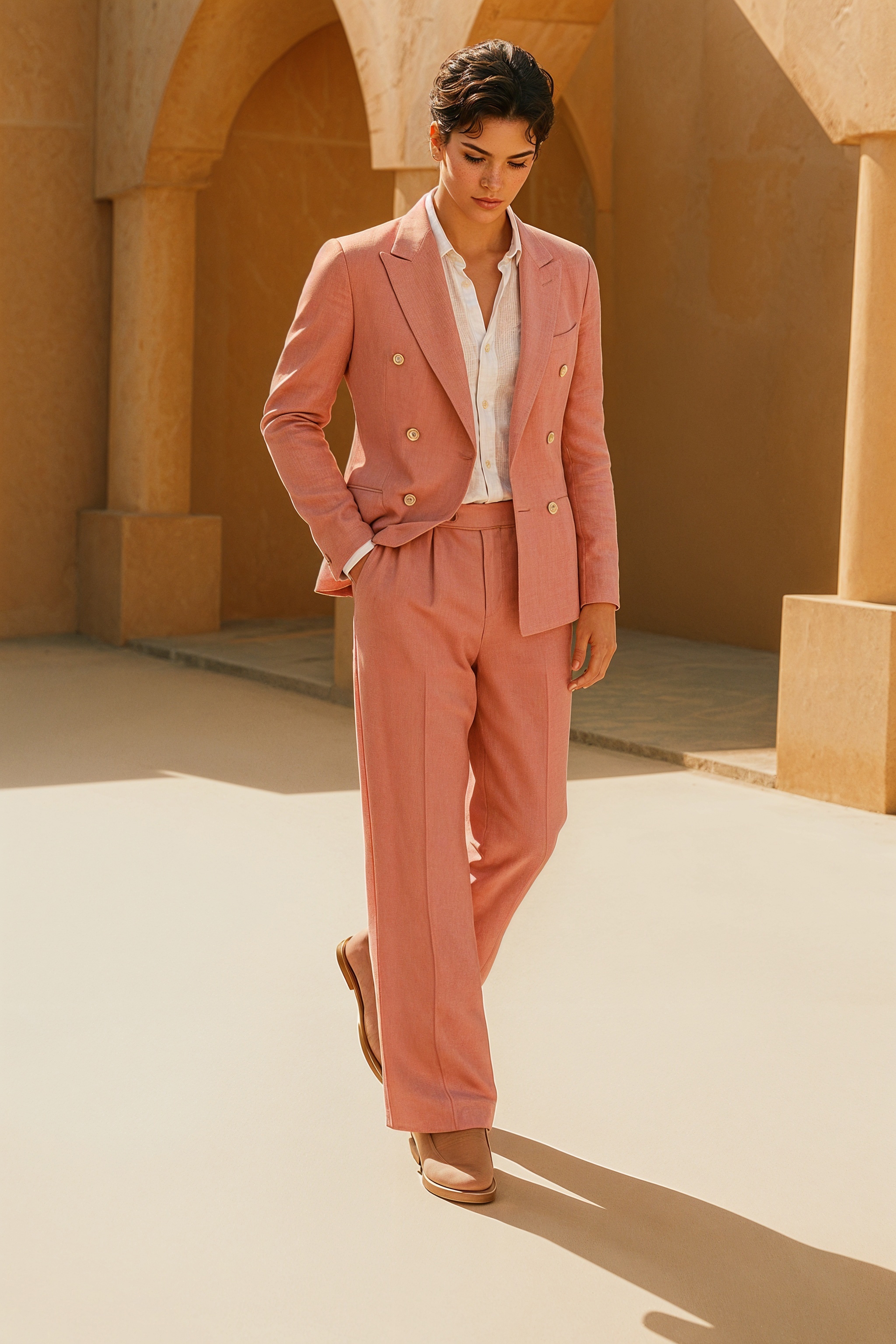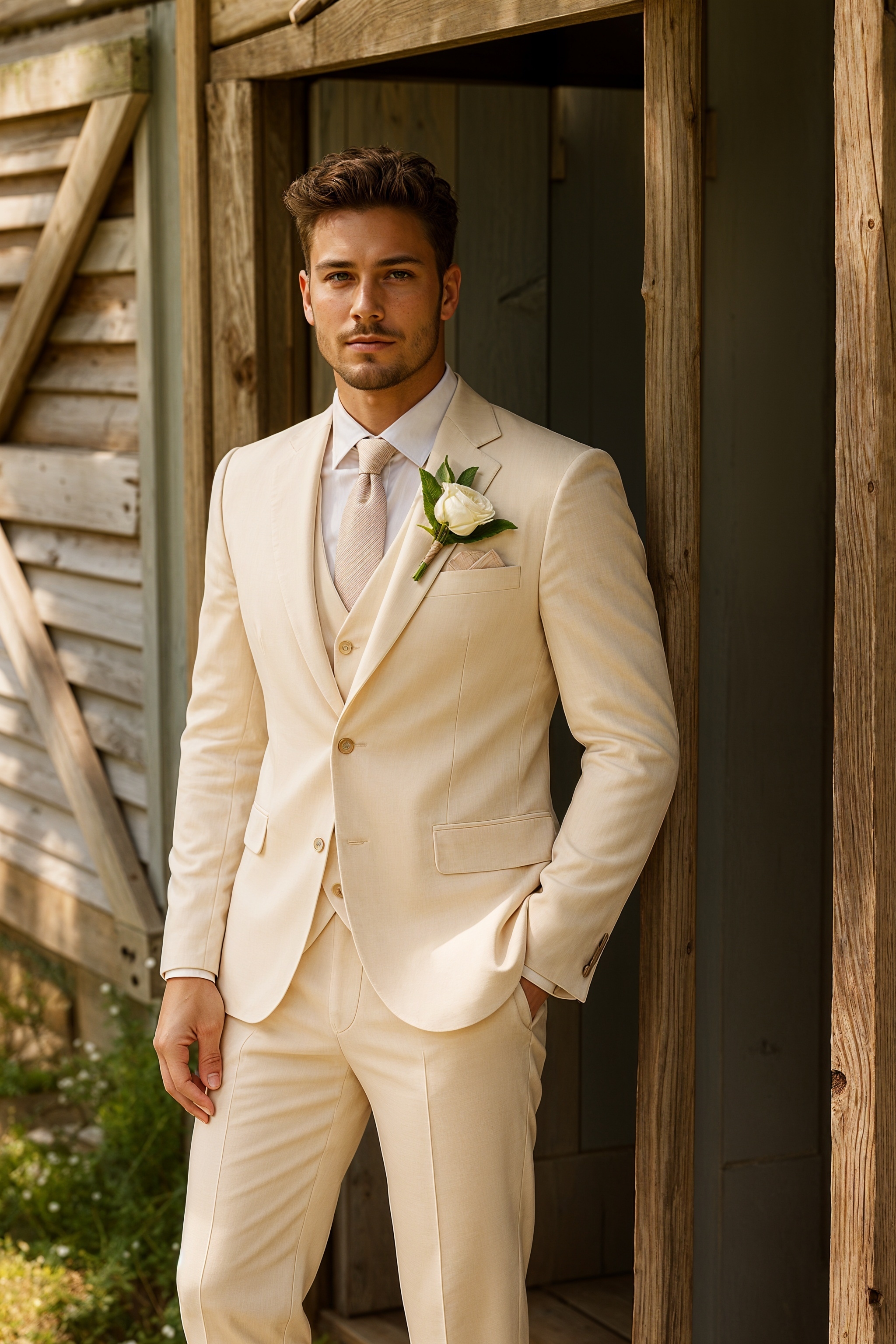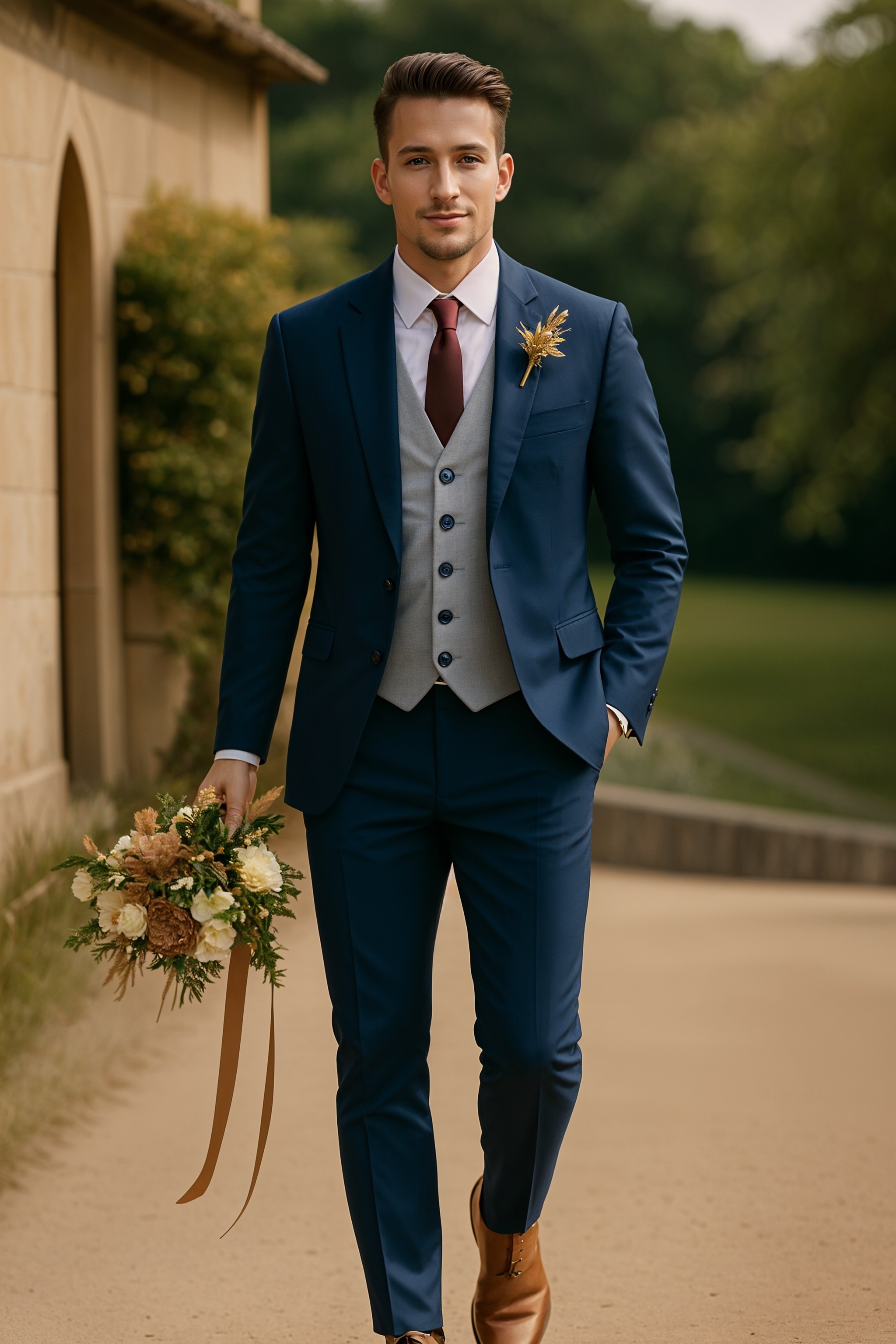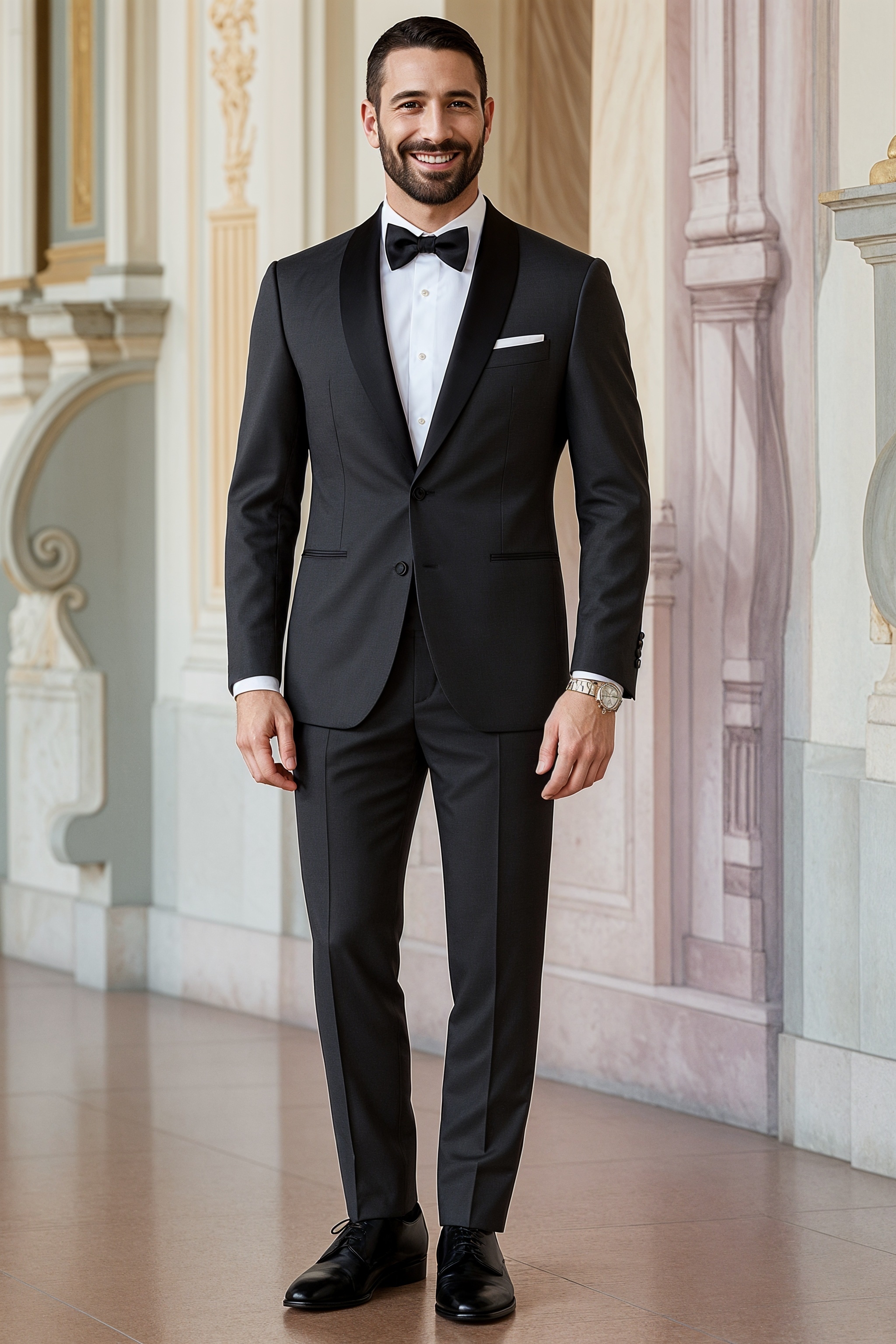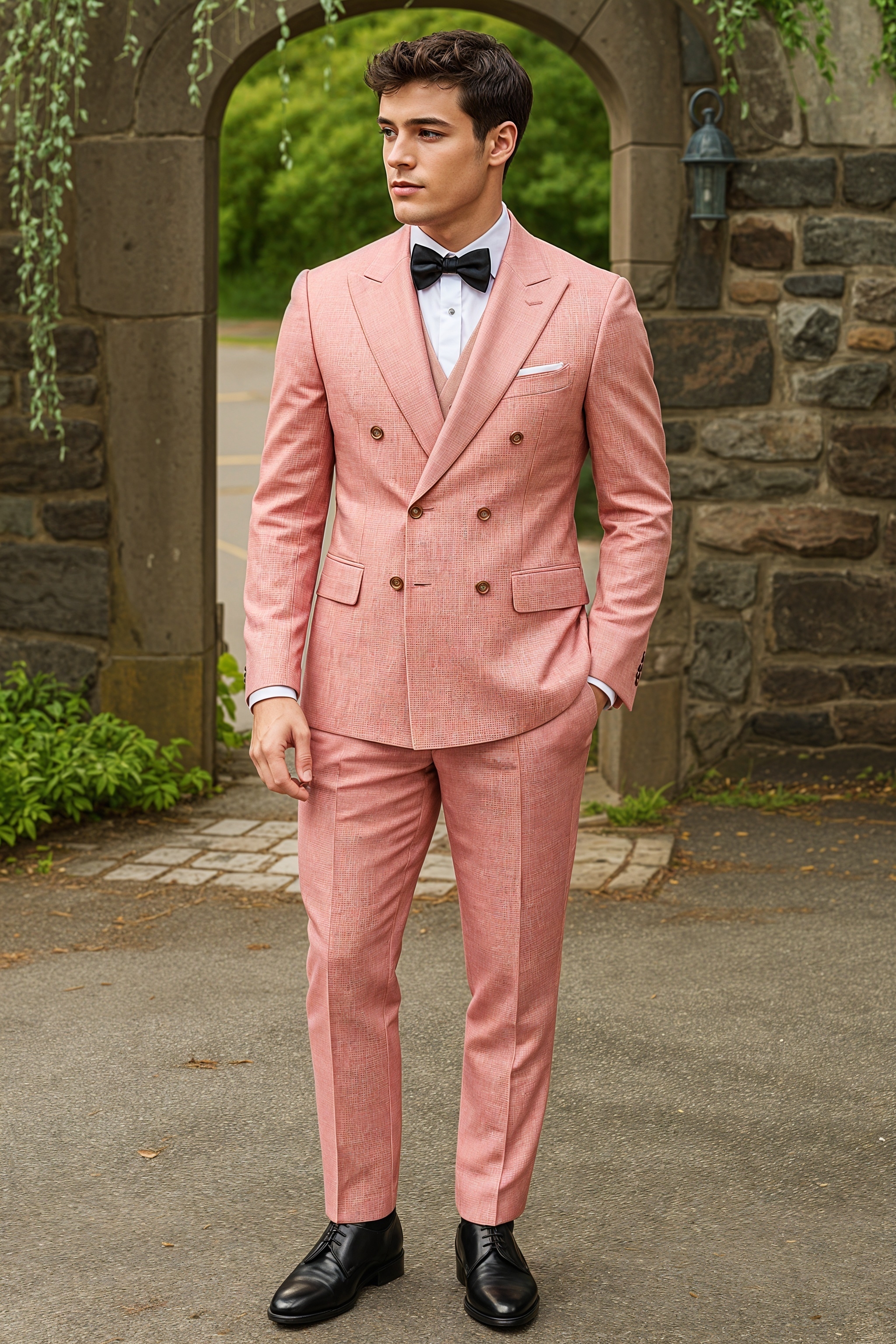Table of Contents[Hide]
In the vast landscape of menswear, the suit remains the most enduring symbol of refinement. It is not merely a set of garments but a complex architectural system designed to enhance the male physique. From the rigid courts of 19th-century Europe to the dynamic business districts of modern Asia, the suit has evolved into a global dialect of power, respect, and aesthetic intelligence. For the modern gentleman, and particularly for patrons of bespoke services like Dunnio Tailor, understanding the anatomy of a suit is the first step toward mastering this language.
This guide explores the technical intricacies of tailoring—from the geometry of lapels to the physics of pant pleats—while examining the cultural shifts that influence how these garments are worn today.
The Evolution of the Modern Suit
The journey of the suit is one of simplification. Before the 19th century, men’s fashion was dominated by the ornate excess of the French court, characterized by silk, lace, and high heels. The pivot point occurred with Beau Brummell, an English arbiter of fashion who introduced the concept of the "Great Male Renunciation." Brummell stripped away the decoration, favoring dark coats, full-length trousers, and pristine linen. He established the enduring principle that fit and cleanliness are superior to ornamentation.

This evolution continued into the 20th century, shaped by both practicality and royal quirks. A prime example is the rule regarding the bottom button of a jacket. King Edward VII, due to his substantial girth, was unable to fasten the bottom button of his vest or jacket. To avoid embarrassing the monarch, his court followed suit. Today, leaving the bottom button undone on a single-breasted jacket is a non-negotiable rule of tailoring, allowing the fabric to drape properly when the wearer moves.

Jacket Anatomy and Design Dynamics
The jacket is the centerpiece of the ensemble. Its construction defines the silhouette, and the variations in design offered by tailors allow for profound personalization.
-
Lapel Styles: Geometry and Meaning
-
The lapel frames the face and chest. The Notch lapel is the industry standard, featuring a V-shaped cut where the collar meets the lapel. It is the safest, most versatile choice for business. However, Dunnio Tailor offers distinctive variations like the Round Notch. This style softens the sharp angle of the V, harkening back to the 1920s. It offers a vintage, dandy-esque aesthetic that breaks the monotony of the corporate uniform.
-
The Peak lapel, where the edges point upward toward the shoulders, is a garment of authority. Traditionally reserved for tailcoats and double-breasted jackets, it is now a power-move on single-breasted suits, broadening the shoulders visually. Conversely, the Shawl lapel features a continuous curve with no gorge. It is strictly reserved for the Tuxedo, derived from the Victorian smoking jacket, and represents the pinnacle of evening elegance.
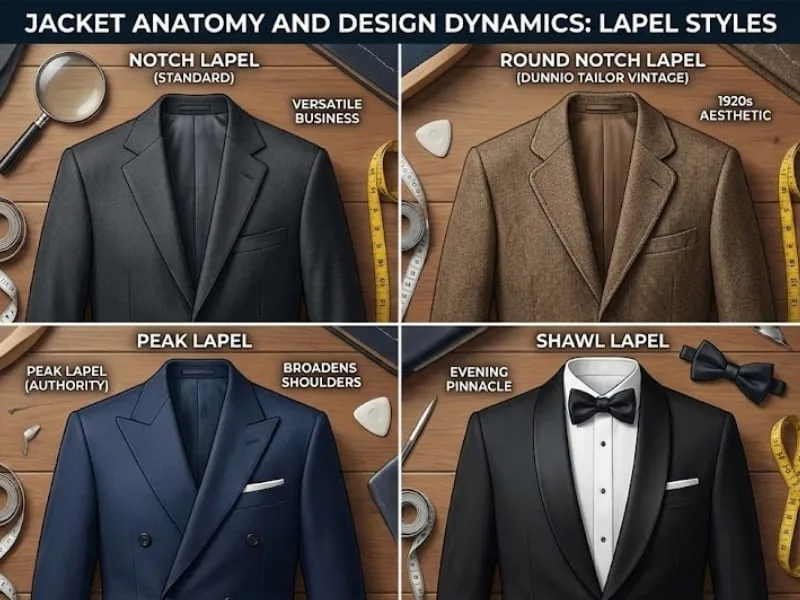
Button Configurations
The number of buttons significantly alters the jacket's vibe. While the 2-button single-breasted jacket is the universal standard, the 4-button jacket stands out as a unique style statement. Historically linked to the Mod fashion of the 1960s and bands like The Beatles, a 4-button jacket has a higher closure, creating a distinct, retro, and somewhat rebellious look compared to traditional cuts.
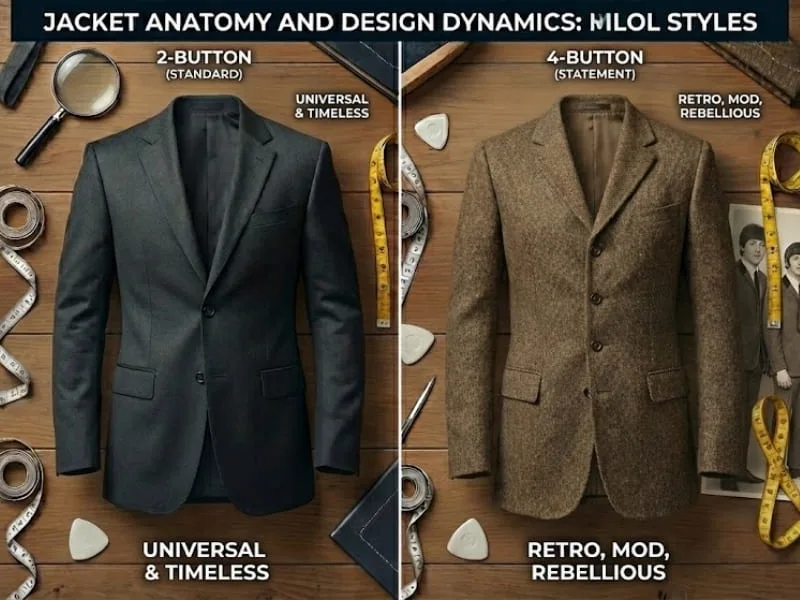
In the realm of double-breasted suits, the button stance dictates formality. The classic 6x2 configuration (six buttons, two functional) is the naval standard. However, the 6x3 configuration, where the jacket closes all the way up to the neck, references military greatcoats and offers a commanding, armor-like appearance. For men of shorter stature, the 4x1 Kent style (four buttons, fastening at the lower button) creates a longer lapel line, lengthening the torso.
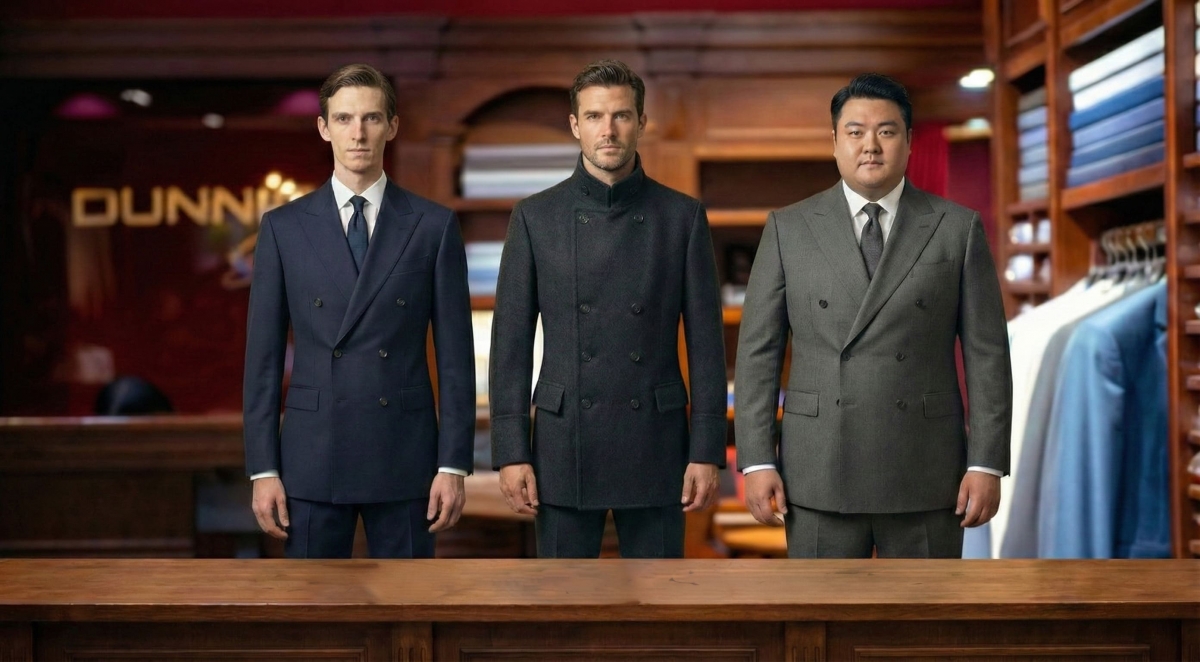
Trousers: Volume and Precision
If the jacket is the frame, the trousers are the foundation. Modern tailoring has moved away from the skinny fits of the 2010s back toward comfort and volume, managed through pleats.
The Physics of Pleats
- Pleats are folds of fabric at the waistband that expand when the wearer sits, providing comfort without sacrificing the silhouette. Beyond the standard single or double pleats, advanced tailoring options include Scissor Pleats and Box Pleats.
- A Scissor Pleat is a complex, inverted style where two folds interact, resembling the blades of a pair of scissors. This Italian-style detail provides a clean vertical line while hiding significant volume for the thigh.
- Triple Pleats are a rare, fashion-forward choice rooted in 19th-century workwear. They create a dramatic drape and are ideal for high-waisted trousers, offering maximum comfort and a distinct vintage profile.

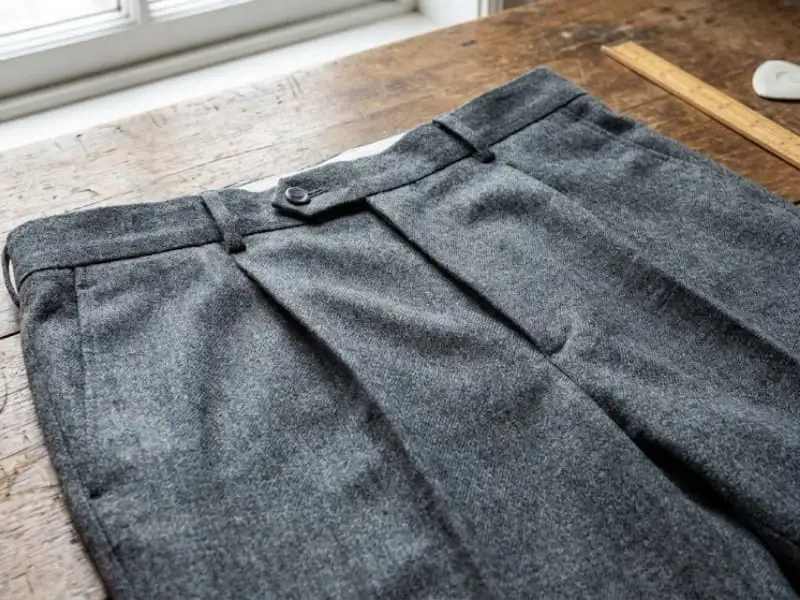
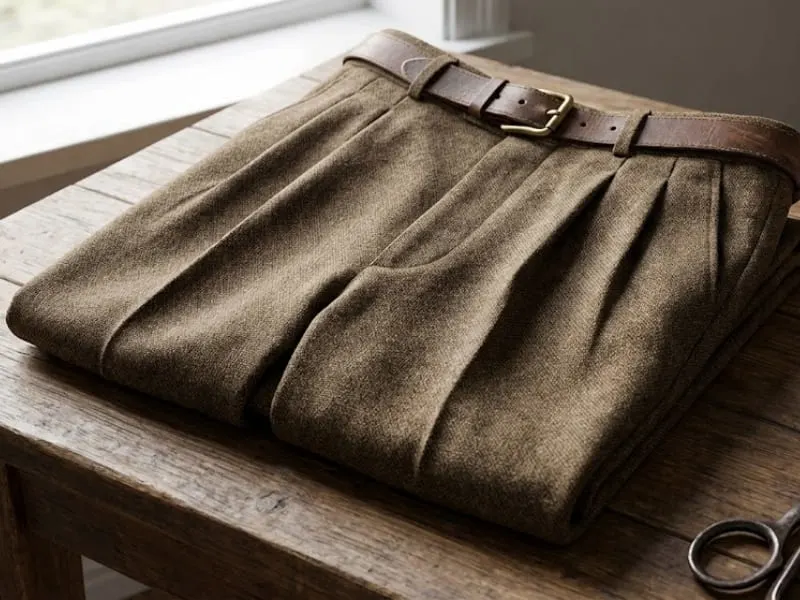
Waistbands and Cuffs
The waistband determines how the pant sits. While belt loops are standard, Side Adjusters are the mark of a true connoisseur. By removing the need for a belt, side adjusters create an unbroken vertical line, making the wearer appear taller. Regarding the hem, a Cuff (or turn-up) adds weight to the bottom of the pant, ensuring the fabric hangs straight, which is particularly important for pleated trousers.
The Waistcoat: Defining the Three-Piece Suit
The waistcoat, or vest, adds a layer of formality and warmth. The neck design is crucial here. The classic V-neck or Peak Lapel vest frames the tie beautifully. However, the N Neck style found in Dunnio Tailor’s inventory represents a collarless, higher-closing design. This minimalist approach is modern and sleek, reducing bulk under the jacket while maintaining the polished look of a three-piece suit.
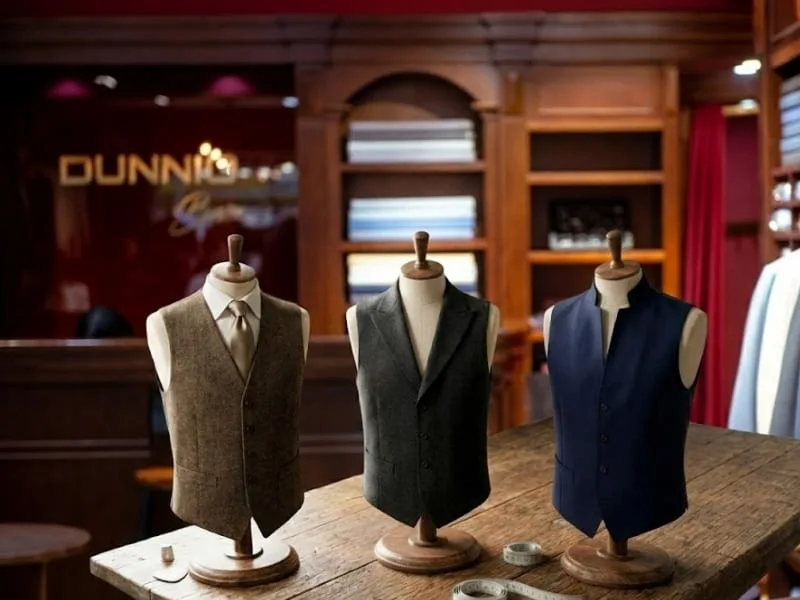
Distinguishing the suit from the tuxedo
Confusion often arises between a suit and a tuxedo. The distinction lies in the materials. A suit is made from a single fabric throughout. A tuxedo must feature satin or grosgrain silk facings on the lapels, buttons, and a stripe down the side of the trousers. Furthermore, a tuxedo is never worn with a belt and is strictly for events after 6:00 PM.

Cultural and Religious Influences on Tailoring
Fashion is deeply intertwined with culture. This is evident in how colors and materials are perceived across different regions.
The White Suit Paradox
In Western culture, a white or ivory dinner jacket symbolizes high-summer leisure or a tropical wedding. It implies status, as keeping white fabric clean was historically a privilege of the wealthy. Conversely, in traditional Asian cultures, white was often associated with mourning. However, globalization and Hollywood influence have largely overridden this, making the white tuxedo a popular, romantic choice for modern Asian grooms, symbolizing purity and celebration rather than grief.
If a white suit is this complicated, imagine the rules for black, blue, and gray. Don't make a critical style mistake on your wedding day - discover the essential guide to choosing the perfect men's wedding suit now.
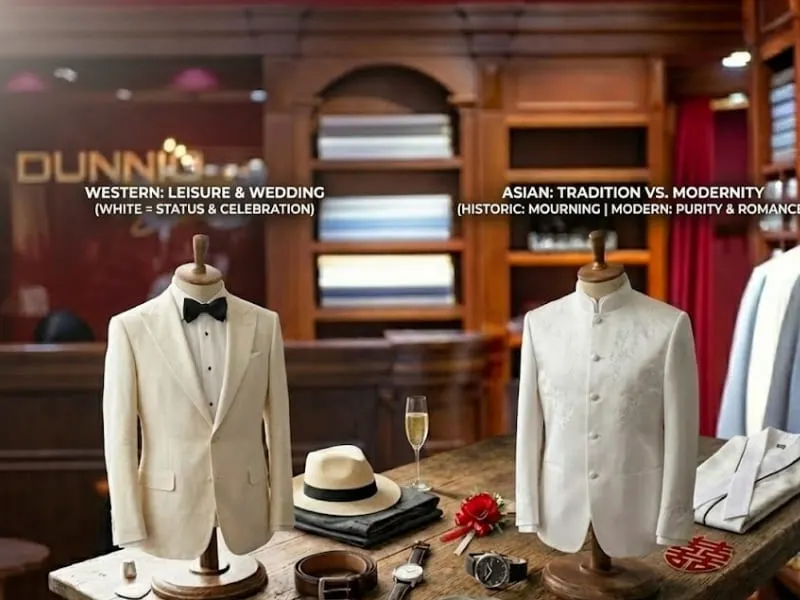
Religious Constraints
Tailoring must often adapt to faith-based rules.
- For Jewish clients observing Orthodox laws, a suit must be free of Shatnez—the forbidden mixture of wool and linen. Tailors must ensure the internal canvas does not contain linen if the suit is wool.
- In Islamic tradition, men are generally prohibited from wearing silk and gold. A compliant suit would substitute a silk lining for cupro or viscose and avoid gold-plated buttons.
- The Amish community rejects buttons entirely on coats, associating them with military uniforms and vanity. Instead, they use hooks and eyes, preserving a silhouette of humility.



Modern Styling and Application
The rules of tailoring are meant to be mastered, then broken. The Italian concept of Spezzato involves wearing the jacket and trousers of different suits together. This requires a high contrast in color and texture to look intentional.
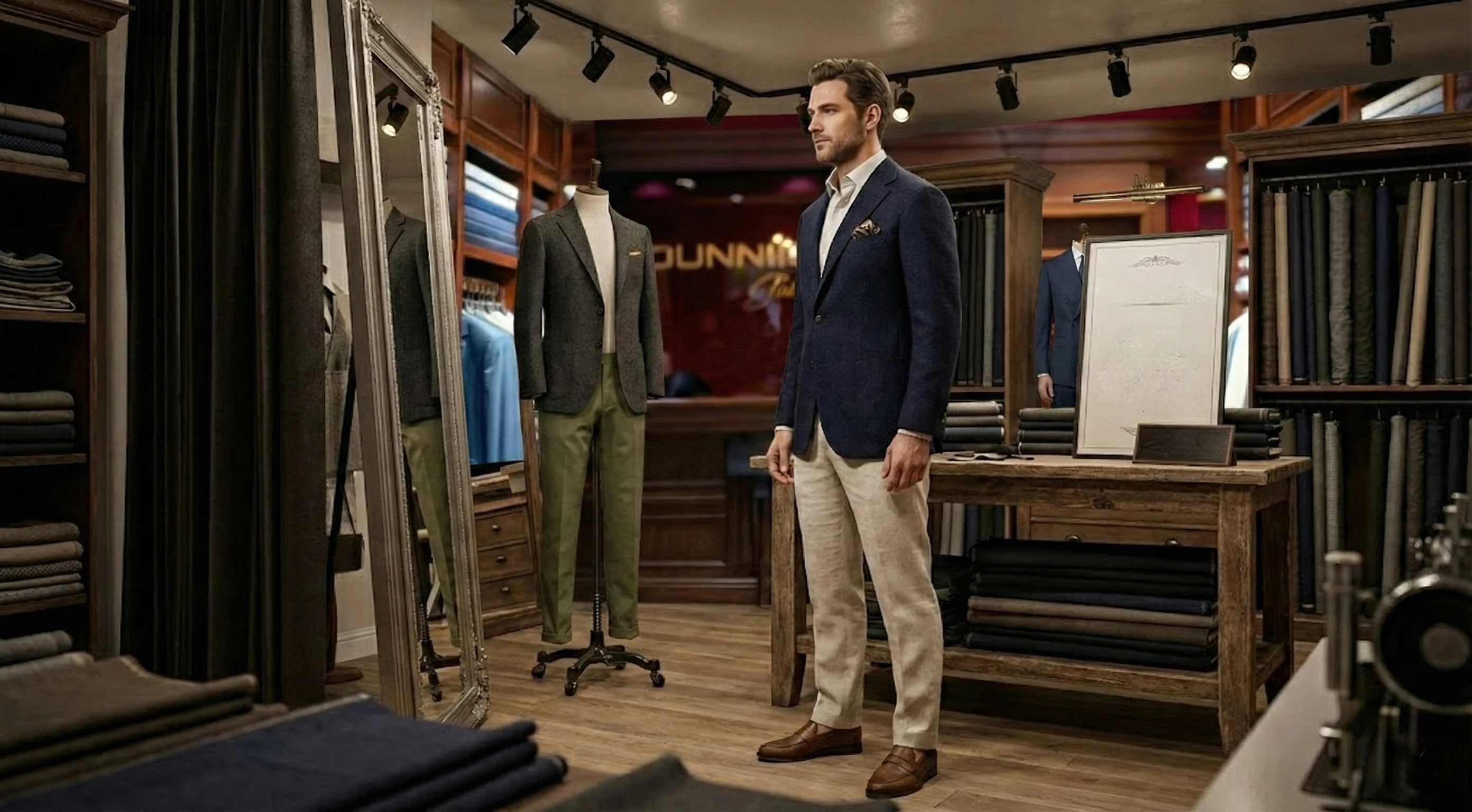
Similarly, wearing sneakers with a suit is a modern norm. To execute this successfully, the tailoring must be precise. The trousers should be cut with no break (barely touching the shoe) to showcase the sneaker, which should be a minimalist, leather design rather than a technical running shoe.

From the structured authority of a double-breasted jacket to the relaxed elegance of a Scissor Pleat trouser, the modern suit offers endless possibilities. Whether adhering to the strict codes of Black Tie or experimenting with retro Mod styles, the key remains in the fit and the wearer’s understanding of the garment’s history.
Conclusion
From the structured authority of a double-breasted jacket to the relaxed elegance of a scissor pleat trouser, the modern suit offers endless possibilities. Whether adhering to the strict codes of black tie or experimenting with retro Mod styles, the key remains in the fit and the wearer’s understanding of the garment’s history. The suit is more than clothing; it is a personal signature.
Dunnio Tailor invites you to explore your unique style and unleash your creativity with our interactive 3D Design Tool. Visualize your dream ensemble by customizing every detail from fabric textures and colors to lapel styles and pant pleats. Start sketching your bespoke suit or tuxedo today.


